What are chandeliers?
Why use a chandelier?
Chandelier types
Where to use chandeliers?
How to select a chandelier
How high should I hang a chandelier?
Chandelier styles
Chandelier Buying Checklist
Buying Tips

What are chandeliers?
A chandelier is described as a single suspension light fixture designed with multiple arms or lampholders for light sources. Available in versatile designs and sizes, they offer a bold and unique lighting statement for a range of spaces. The earliest form of the chandelier was a ring or crown formation with candles as the light source. This early chandelier has undergone many revisions and refinements to evolve into the many variations found today.
Once you’ve read through this guide, visit our Chandeliers collection to discover our versatile selection!

Why use a chandelier?
A common reason for choosing a chandelier is to introduce a functional statement piece to your space. Chandeliers can either carry the aesthetics of grand luxury or create a bold statement with the newer modern designs. They make a lasting impression on guests and visitors to your home or business.
Chandelier types
Candle
Often a circular lighting fixture with upright lampholders that imitate a candle-like appearance. This type replicates the earliest form of chandelier designs. More modern designs have now include candle shaped bulbs in an updated design.

Crystal
Ornate in design and luxurious, this type is recognisable and commonly associated with chandeliers. Made in an abundance of different forms, it’s iconic in design and regarded as having a timeless quality.
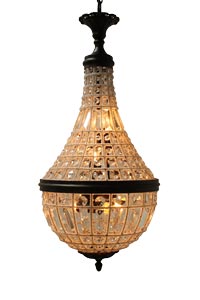
Shaded
These chandeliers feature glass or fabric shaded lampholders. They can be positioned upwards or downwards and blend and merge styles. Often, they provide softer dimmer light.

Tiered
Tiered chandeliers are sculptural in design with lampholders across multiple tiers. They work well above tables or as grand lighting solutions. They are available in anywhere between two to five tiers.
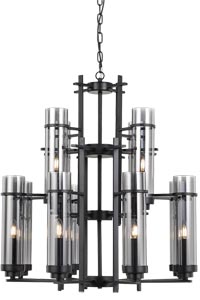
Bare Bulb
Bare bulb chandeliers can be in many styles and designs. May be made from rope, metal or glass, they all feature bare bulbs as part of the design. Heighten these chandeliers by using filament Edison or LED bulbs.
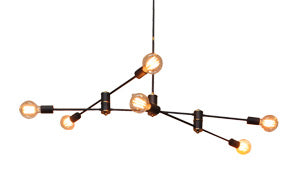
Where to use chandeliers?
Chandeliers can be used throughout many types of rooms. They are commonly found in hotel lobbies, entry foyers, large stairwells, living rooms or above grand dining rooms. They can also be utilised in spaces like above a kitchen island bench, a master bedroom or in a function room at a venue.

How to select a chandelier
Scale/size
Generally, chandeliers range from small to large fixture sizes. These can be compact, cylindrical, drum shaped chandeliers or large wide, luxurious crystal and glass chandeliers. Some chandeliers can be oversized, perfect for large open spaces. Depending on the location, chandelier size and scale should always be taken into consideration.
To choose a chandelier with the correct size and scale, follow a simple rule;
Width: length of room (in feet) + width of room (in feet) = ideal width of chandelier (in inches), e.g. 8ft + 8ft = 16 inches, i.e. chandelier width: 40cm
Height: Height of the room (in feet) X 2.5 or 3 = ideal height of chandelier (in inches), e.g. 8ft X 3 = 24 inches, i.e. chandelier height: 35cm
The above measuring advice is a general guide only. Each room and space will differ and vary in measurement. The best advice is to get out the measuring tape and sketch up a lighting plan to see if your chandelier will suit the room you want it in.
How high should I hang a chandelier?
Dining room table
The trick with a dining room table chandelier is to get the size just right – too big or too small and it will look disproportionate to any eye. A good indication for a correct chandelier width is to measure the width of a table and subtract approximately 30 centimetres (1 foot). The chandelier should hang around 75 to 90 centimetres above the tabletop to ensure nothing bumps or knocks the fixture. Always hang the chandelier in the centre of the table too.

Stairwell and lobby foyer
Chandeliers look great in two storey homes, particularly in a stairwell above a staircase landing or in an open foyer of a hotel. Installing the fixture centrally and 2 metres (7 feet) above the staircase landing ensures optimal height for people using the staircase. In a two storey, installing the chandelier at eye level for people on the second floor ensures it holds visual appeal from all angles.

General placement (above floor/hallway/entry foyer)
Generally, the bottom of your chandelier should be a minimum of 2.1 metres (7 feet) from the floor. This varies from room to room and ceiling type or height. Hanging the chandelier in a central position always works best, whether it’s above a living room coffee table or centrally in an entry hallway.

Chandelier styles
Traditional
The most recognisable style of chandelier. Known for their ornate, grand and luxurious designs, these are made using crystal or glass and can feature components that are purely cosmetic and aesthetic. Classic elegance come to mind when thinking about traditional chandeliers.
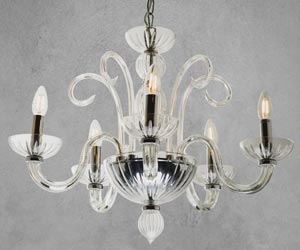
Transitional
This style fills in the gap between tradition and contemporary designs. These are not as ornate as their traditional counterparts and aren’t as modernised as contemporary styles. The use of metals or bronze finishes emerge here as well as the marrying of curved and straighter lines.
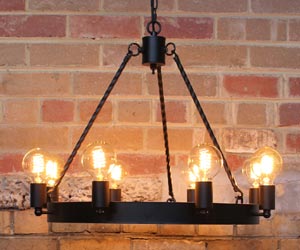
Rustic
A departure from ornate fixtures, contemporary style chandeliers have clean, modern and simple lines and forms instead. Innovative designs and artistic shapes can be found in this style along with the introduction of LED or energy efficient technology.
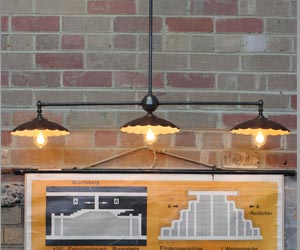
Industrial
A popular style that imitates factory designs, often with an urban, mechanical or reclaimed look. These unique chandeliers can feature cage guards, raw pipe-like arm fixtures and exposed screws.
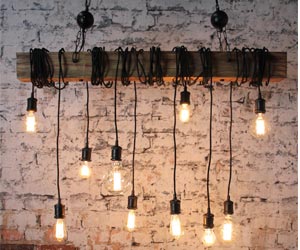
Contemporary
A departure from ornate fixtures, contemporary style chandeliers have clean, modern and simple lines and forms instead. Innovative designs and artistic shapes can be found in this style along with the introduction of LED or energy efficient technology.
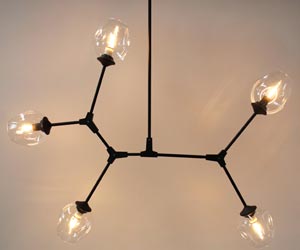
Chandelier Buying Checklist
Buying Tips
- Ensure you measure your space and plan out where you want to install your light
- Use a pen and paper to map out a lighting plan, this can help solve spatial issues
- Consider the style of your room and the style of chandelier that works best for your space
